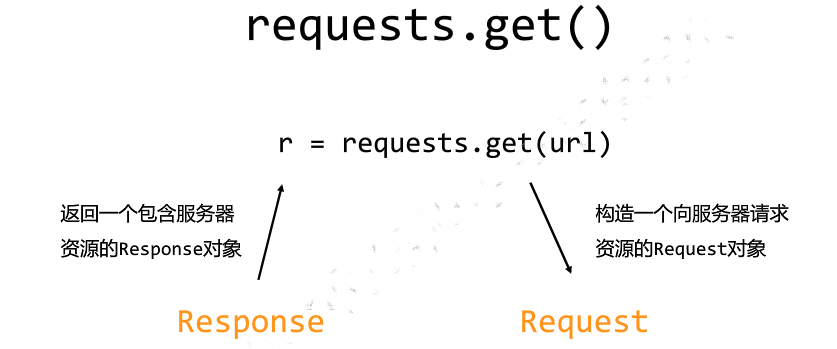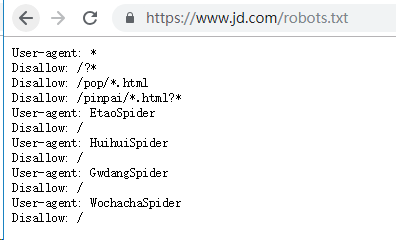from bs4 import BeautifulSoup
import requests
demo = requests.get("http://python123.io/ws/demo.html").text
soup = BeautifulSoup(demo,"html.parser")
#标签树的上行遍历
print("遍历儿子节点:\n")
for child in soup.body.children:
print(child)
print("遍历子孙节点:\n")
for child1 in soup.body.descendants:
print(child1)
print(soup.title.parent)
print(soup.html.parent)
for parent in soup.a.parents:
if parent is None:
print(parent)
else:
print(parent.name)
#标签树的平行遍历
print(soup.a.next_sibling)
print(soup.a.next_sibling.next_sibling)
print(soup.a.previous_sibling)
7 正则表达式
正则表达式是处理字符串的强大工具,它有自己特定的语法结构,实现字符串的检索、替换、匹配验证都可以。对于爬虫来说,
从HTML里提取想要的信息非常方便。python的re库提供了整个正则表达式的实现
7.1 案例引入
这里介绍一个正则表达式测试工具http://tool.oschina.net/regex,输入待匹配的文本,然选择常用的正则表达式,得到相应的匹配结果,
适合新手入门。这里输入:
hello,my phone is 18898566588 and email is david@gmail.com, and wen is https://www.cnblogs.com/wenwei-blog/
点击“匹配Email地址”,即可匹配出网址。
?

7.2 常用正则表达式匹配规则
'.' 匹配所有字符串,除\n以外
‘-’ 表示范围[0-9]
'*' 匹配前面的子表达式零次或多次。要匹配 * 字符,请使用 \*。
'+' 匹配前面的子表达式一次或多次。要匹配 + 字符,请使用 \+
'^' 匹配字符串开头
‘$’ 匹配字符串结尾 re
'\' 转义字符, 使后一个字符改变原来的意思,如果字符串中有字符*需要匹配,可以\*或者字符集[*] re.findall(r'3\*','3*ds')结['3*']
'*' 匹配前面的字符0次或多次 re.findall("ab*","cabc3abcbbac")结果:['ab', 'ab', 'a']
‘?’ 匹配前一个字符串0次或1次 re.findall('ab?','abcabcabcadf')结果['ab', 'ab', 'ab', 'a']
'{m}' 匹配前一个字符m次 re.findall('cb{1}','bchbchcbfbcbb')结果['cb', 'cb']
'{n,m}' 匹配前一个字符n到m次 re.findall('cb{2,3}','bchbchcbfbcbb')结果['cbb']
'\d' 匹配数字,等于[0-9] re.findall('\d','电话:10086')结果['1', '0', '0', '8', '6']
'\D' 匹配非数字,等于[^0-9] re.findall('\D','电话:10086')结果['电', '话', ':']
'\w' 匹配字母和数字,等于[A-Za-z0-9] re.findall('\w','alex123,./;;;')结果['a', 'l', 'e', 'x', '1', '2', '3']
'\W' 匹配非英文字母和数字,等于[^A-Za-z0-9] re.findall('\W','alex123,./;;;')结果[',', '.', '/', ';', ';', ';']
'\s' 匹配空白字符 re.findall('\s','3*ds \t\n')结果[' ', '\t', '\n']
'\S' 匹配非空白字符 re.findall('\s','3*ds \t\n')结果['3', '*', 'd', 's']
'\A' 匹配字符串开头
'\Z' 匹配字符串结尾
\t 匹配衣蛾制表符
'\b' 匹配单词的词首和词尾,单词被定义为一个字母数字序列,因此词尾是用空白符或非字母数字符来表示的
'\B' 与\b相反,只在当前位置不在单词边界时匹配
'(?P<name>...)' 分组,除了原有编号外在指定一个额外的别名 re.search("(?P<province>[0-9]{4})(?P<city>[0-9]{2})(?P<birthday>[0-9]{8})","371481199306143242").groupdict("city") 结果{'province': '3714', 'city': '81', 'birthday': '19930614'}
[] 是定义匹配的字符范围。比如 [a-zA-Z0-9] 表示相应位置的字符要匹配英文字符和数字。[\s*]表示空格或者*号。
常用的re函数:
[^...] 不在[]中的字符,比如[^abc]匹配除了a、b、c之外的字符。
.* 具有贪婪的性质,首先匹配到不能匹配为止,根据后面的正则表达式,会进行回溯。
.*? 满足条件的情况只匹配一次,即懒惰匹配。
7.3 常用匹配方法属性函数
| 方法/属性 | 作用 |
| re.match(pattern, string, flags=0) | 从字符串的起始位置匹配,如果起始位置匹配不成功的话,match()就返回none |
| re.search(pattern, string, flags=0) | 扫描整个字符串并返回第一个成功的匹配 |
| re.findall(pattern, string, flags=0) | 找到RE匹配的所有字符串,并把他们作为一个列表返回 |
| re.finditer(pattern, string, flags=0) | 找到RE匹配的所有字符串,并把他们作为一个迭代器返回 |
| re.sub(pattern, repl, string, count=0, flags=0) | 替换匹配到的字符串 |
函数参数说明:
pattern:匹配的正则表达式
string:要匹配的字符串
flags:标记为,用于控制正则表达式的匹配方式,如:是否区分大小写,多行匹配等等。
repl:替换的字符串,也可作为一个函数
count:模式匹配后替换的最大次数,默认0表示替换所有匹配
例子1:
#!/usr/bin/python3
import re
#替换
phone = '18898537584 #这是我的电话号码'
print('我的电话号码:',re.sub('#.*','',phone)) #去掉注释
print(re.sub('\D','',phone))
#search
ip_addr = re.search('(\d{3}\.){1,3}\d{1,3}\.\d{1,3}',os.popen('ifconfig').read())
print(ip_addr)
#match
>>> a = re.match('\d+','2ewrer666dad3123df45')
>>> print(a.group())
2
获取匹配的函数:
| 方法/属性 | 作用 |
| group(num=0) | 匹配的整个表达式的字符串,group() 可以一次输入多个组号,在这种情况下它将返回一个包含那些组所对应值的元组。 |
| groups() | 返回包含所有小组字符串的元组,从1到所含的小组 |
| groupdict() | 返回以有别名的组的别名为键、以该组截获的子串为值的字典 |
| start() | 返回匹配开始的位置 |
| end() | 返回匹配结束的位置 |
| span() | 返回一个元组包含匹配(开始,结束)的位置 |
?
re模块中分组的作用?
(1)判断是否匹配(2)灵活提取匹配到各个分组的值。
>>> import re
>>> print(re.search(r'(\d+)-([a-z])','34324-dfsdfs777-hhh').group(0)) #返回整体
34324-d
>>> print(re.search(r'(\d+)-([a-z])','34324-dfsdfs777-hhh').group(1)) #返回第一组
34324
>>> print(re.search(r'(\d+)-([a-z])','34324-dfsdfs777-hhh').group(2)) #获取第二组
d
>>> print(re.search(r'(\d+)-([a-z])','34324-dfsdfs777-hhh').group(3)) #不存在。报错“no such group”
Traceback (most recent call last):
File "<stdin>", line 1, in <module>
IndexError: no such group






























